



The Irish Traditional Music Archive (ITMA) is committed to providing free, universal access to the rich cultural tradition of Irish music, song and dance. If you’re able, we’d love for you to consider a donation. Any level of support will help us preserve and grow this tradition for future generations.
The Sliabh Luachra slides are instantly recognisable thanks to their special rhythm and the brisk manner of playing, the qualities rooted in their close association with the vigorous dance of the same name.
The Slide is the culmination of the Polka Set, a quadrille-based social dance from the Cork-Kerry border that in the times of Denis Murphy and Pádraig O’Keeffe no house party with live music could go without. The name itself comes from the signature movement in which the two opposing couples slide towards the center of the set and then slide back out.
The figures of the set existed in many local variants before they became codified. The Slide figure (or figures) allowed the dancers to show off their moves and required a selection of energetic tunes from the musicians, especially so in the penultimate figure of the set. These fast-paced tunes have become commonly known as slides.
Outside of Sliabh Luachra slides are often equated to single jigs but this analogy could be misleading. Many of the tunes that we now know as slides were not originally single jigs but instead have been specifically adapted to suit the music for the Slide from a wide variety of rhythms. There are examples of local musicians reimagining jigs, airs, marches, strathspeys, flings, polkas and reels.
Denis Murphy liked demonstrating how Pádraig O’Keeffe transformed tunes into slides and Breandán Breathnach made notes of some of these pairs on his cards (Maurice Manley’s, polka and slide – CICD 6444 and CICD 1980; The old torn petticoat, reel and slide – CICD 1416). More slides can be traced back to older tunes with some research (untitled [John Mahony’s; Mary Darby’s], slide vs. The perfect cure – CICD 1150; Charming lovely Nancy, slide vs. Maggie Pickens – CICD 1025).
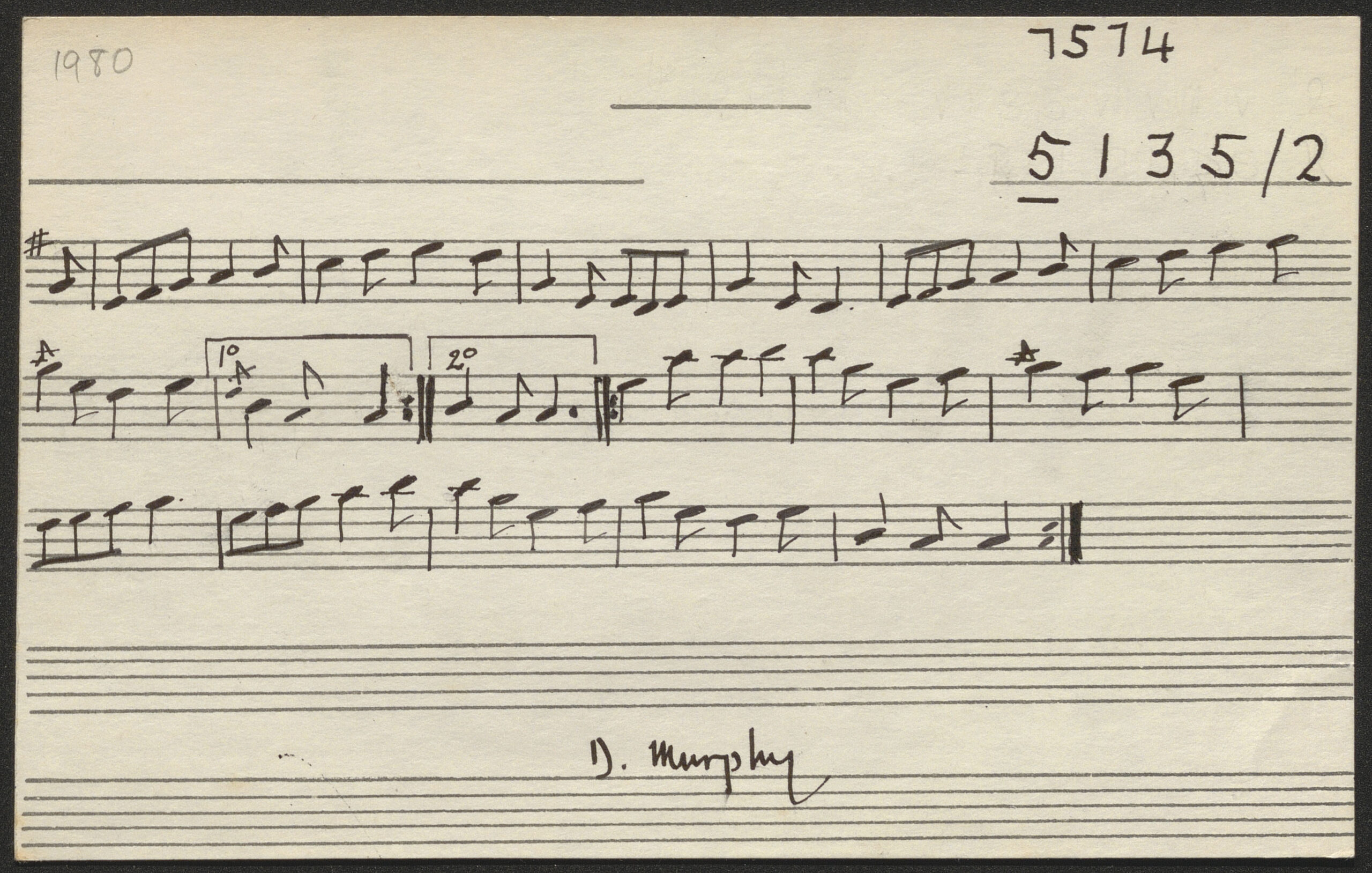
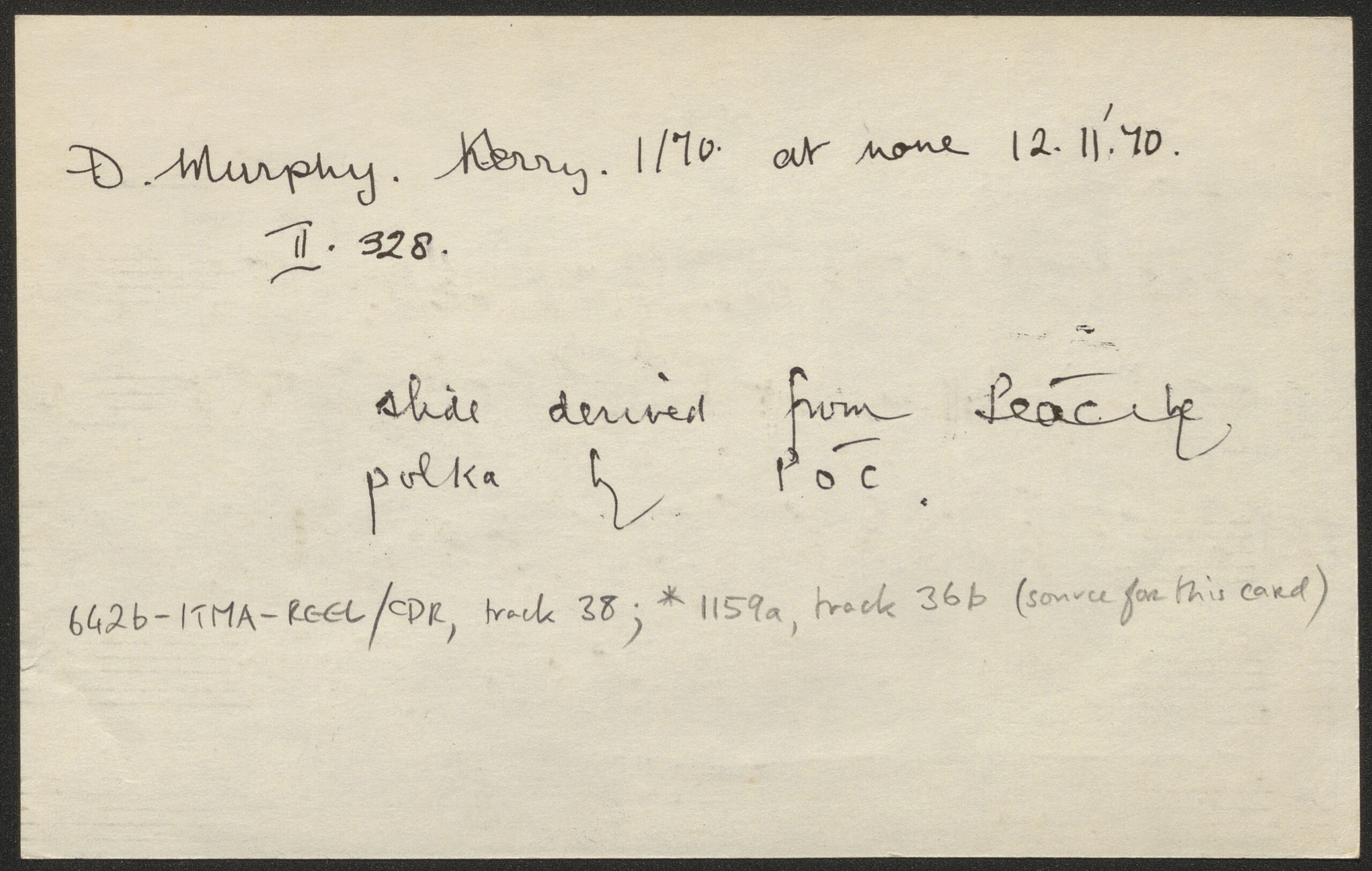
The slides usually bear the names of those people who played them or the place they used to play them in; oftentimes the musicians wouldn’t have any name for them at all. This is in no small part due to the fact that no Irish music collections included the slides as a separate type of dance music until the latter half of the 20th century.
The post-World War 2 collectors of Irish music coming to the Cork-Kerry area recognised these tunes as an intrinsic part of the local repertoire – but it would take decades for them to be classified as a distinct tune type, a process in which Breandán Breathnach and his associates would play a major role. Just as Denis Murphy and Julia Clifford’s classic 1969 LP The Star above the Garter has been credited with putting Sliabh Luachra on the map, Ceol Rince na hÉireann and Johnny O’Leary of Sliabh Luachra: Music From the Cork-Kerry Border have solidified the slides as part of the wealth of Irish traditional music.
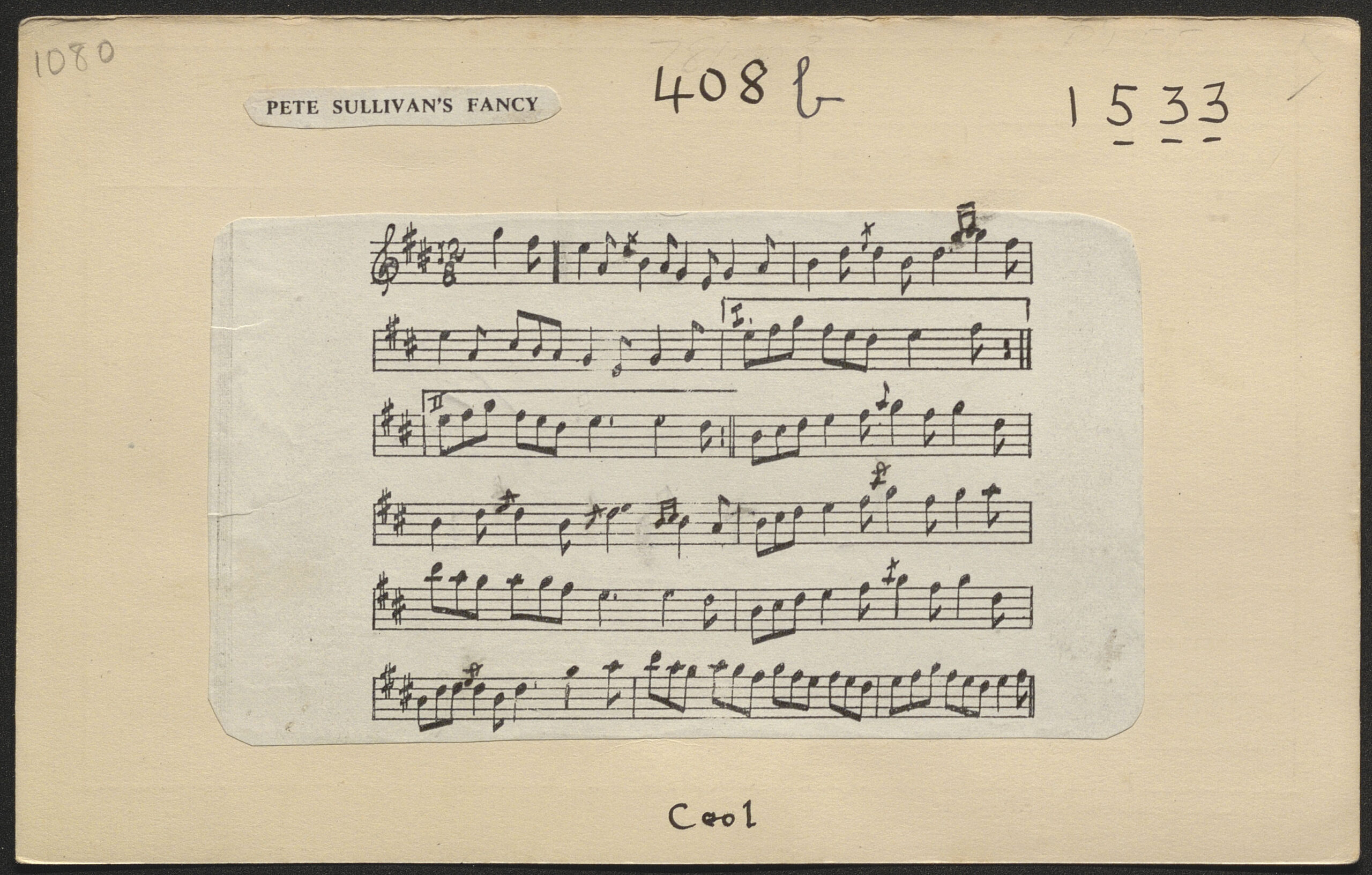
Both the CICD cards and the comments in-between takes on Breathnach’s recordings from the late 1960s provide an interesting insight into the era when nothing was yet set in stone on slides – even in Kerry.
A local anecdote says that the great Dublin collector and uilleann piper Séamus Ennis (1919–1982), who was among the first to collect music in Sliabh Luachra, told Denis Murphy that slides and single jigs are one and the same – a statement that local musicians would not necessarily subscribe to nowadays but one that Denis apparently took to heart.
That story may explain why during the recording sessions Breathnach would simply ask whether the tune just played was “a slide” while Murphy would elaborate that he played “a single jig played for the Slide” (Pete Sullivan’s fancy, CICD 1080). Denis also used both “jig” and “slide” in his own titles for popular slides: The Clamper jig [Going to the well for water], The Scartaglen jig (CICD 1552), Nellie Mahony’s slide [If I had a wife; Mad dancing] (CICD 1493.12), Maurice Manley’s slide (the slide version of the Ballydesmond polka No. 2, CICD 1980 & 1980.11). Meanwhile, Breathnach used the now-common 12/8 and the more dated 6/8 metre for the slides interchangeably while transcribing the music, sometimes adding the note “12/8” as a reminder (CICD 1201).
Another common feature of the Sliabh Luachra slides but one rarely heard these days was the attachment of verses sang to these tunes. Most of these ditties were humorous, some outright risque, only few of them would appear in music collections. Examples of the first lines that also serve as alternative slide titles include Chase me Charlie, The hair fell off my coconut, Can anyone tell me where Nancy’s gone?, Well I know what Kitty wants etc.
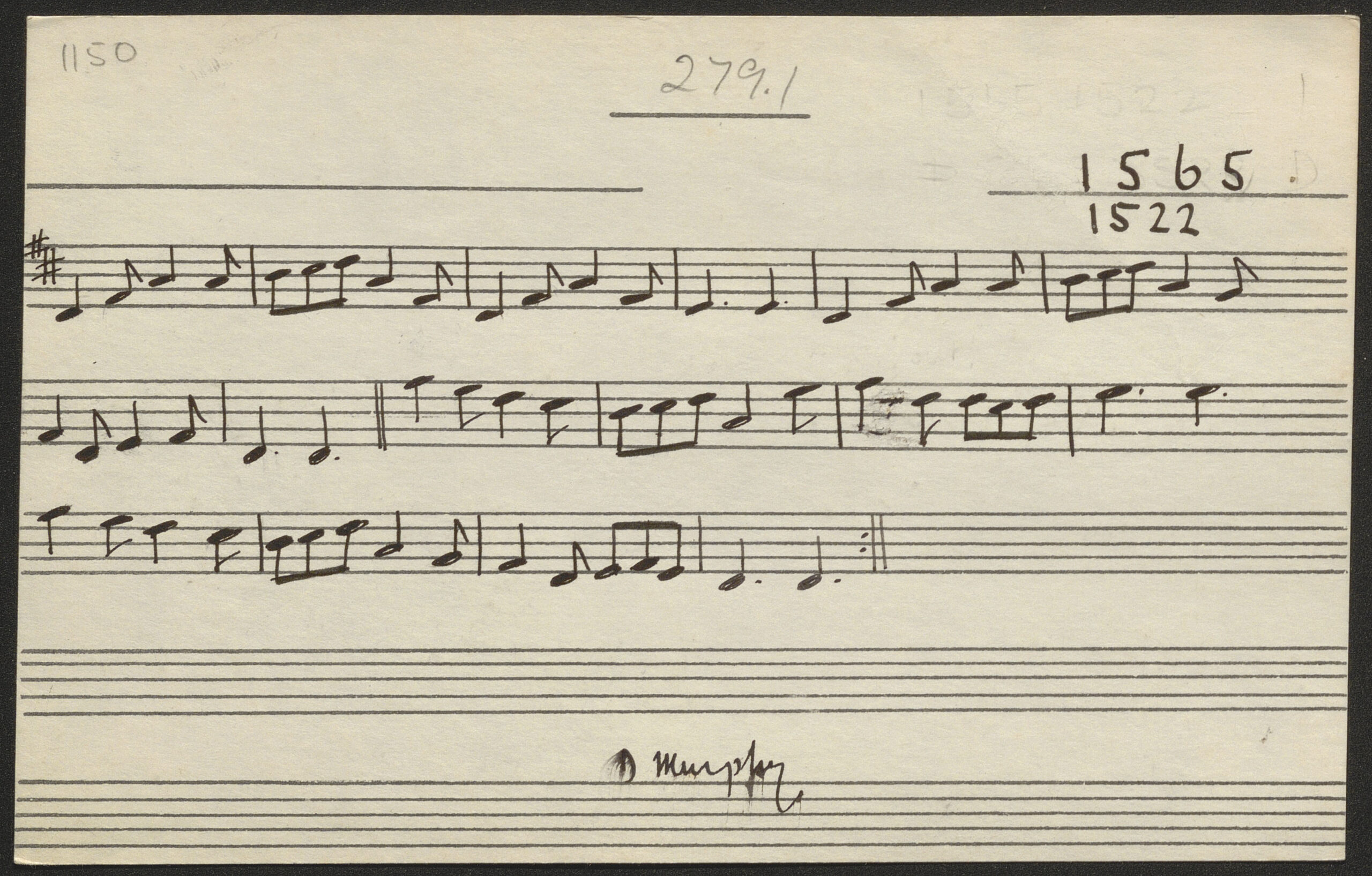
Denis had a store of these verses in his repertoire and would sometimes rhyme new ones himself, according to accounts from his contemporaries. When giving tunes to Breathnach in 1970, he demonstrated how local musicians came up with lyrics on the spot (CICD 1150), an account published in Ceol Rince na hÉireann 5 (no. 72) that has also survived on tape. The slide, which is untitled on the card, is a version of She hasn’t the thing she thought she had, which apparently descended from an old English jig The perfect cure.
Breathnach’s original notes say:
John Mahony had this tune but wouldn’t play it for Mary Darby. She got it by listening [at] the door. She met him next day & started rhyming it:
I have heard another tune,
A tune I think that’s right, too;
Twas Danny Jack that learnt me that,
Says Johnny Cock a Daydo.
Sang it to him.
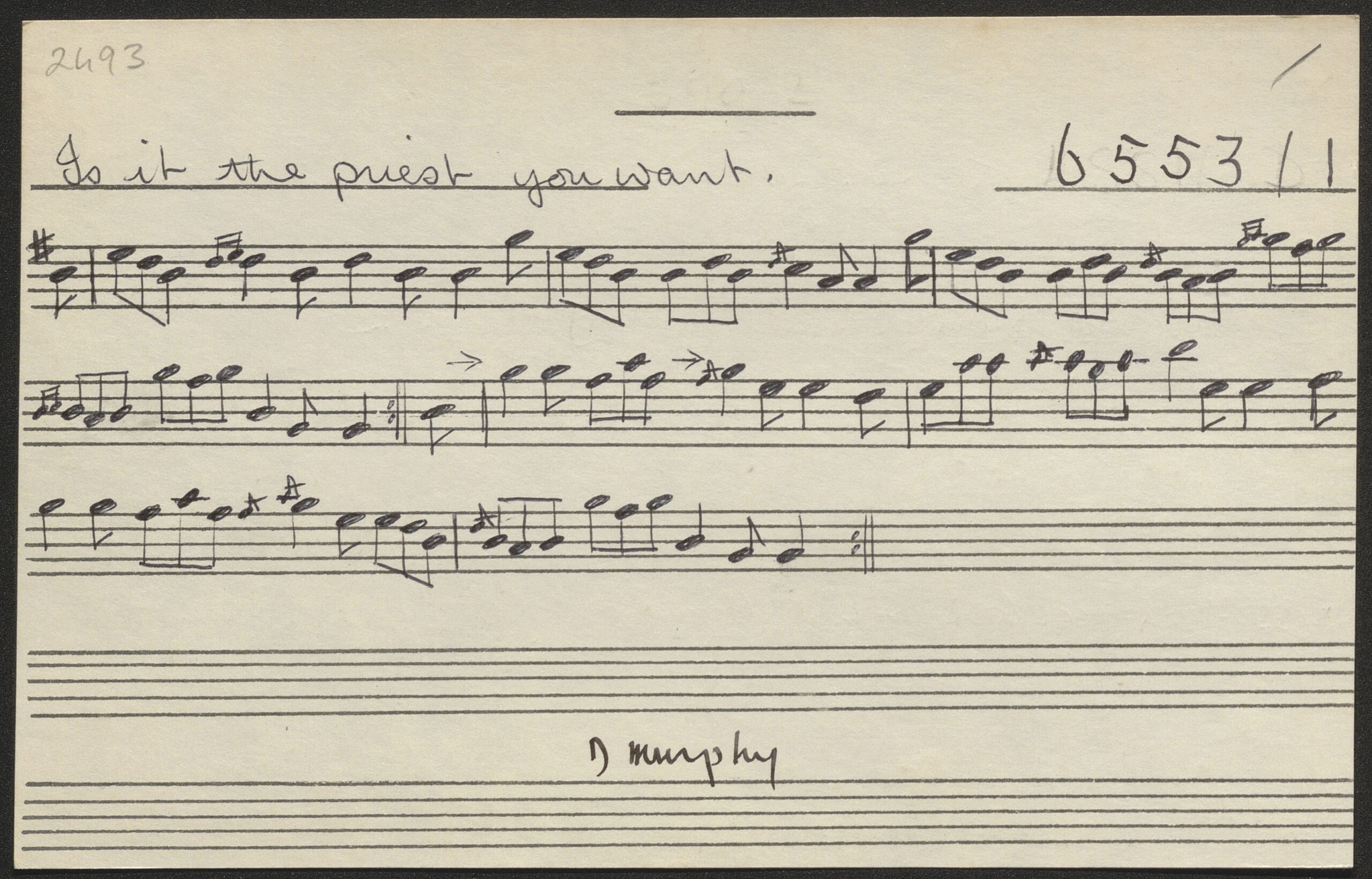
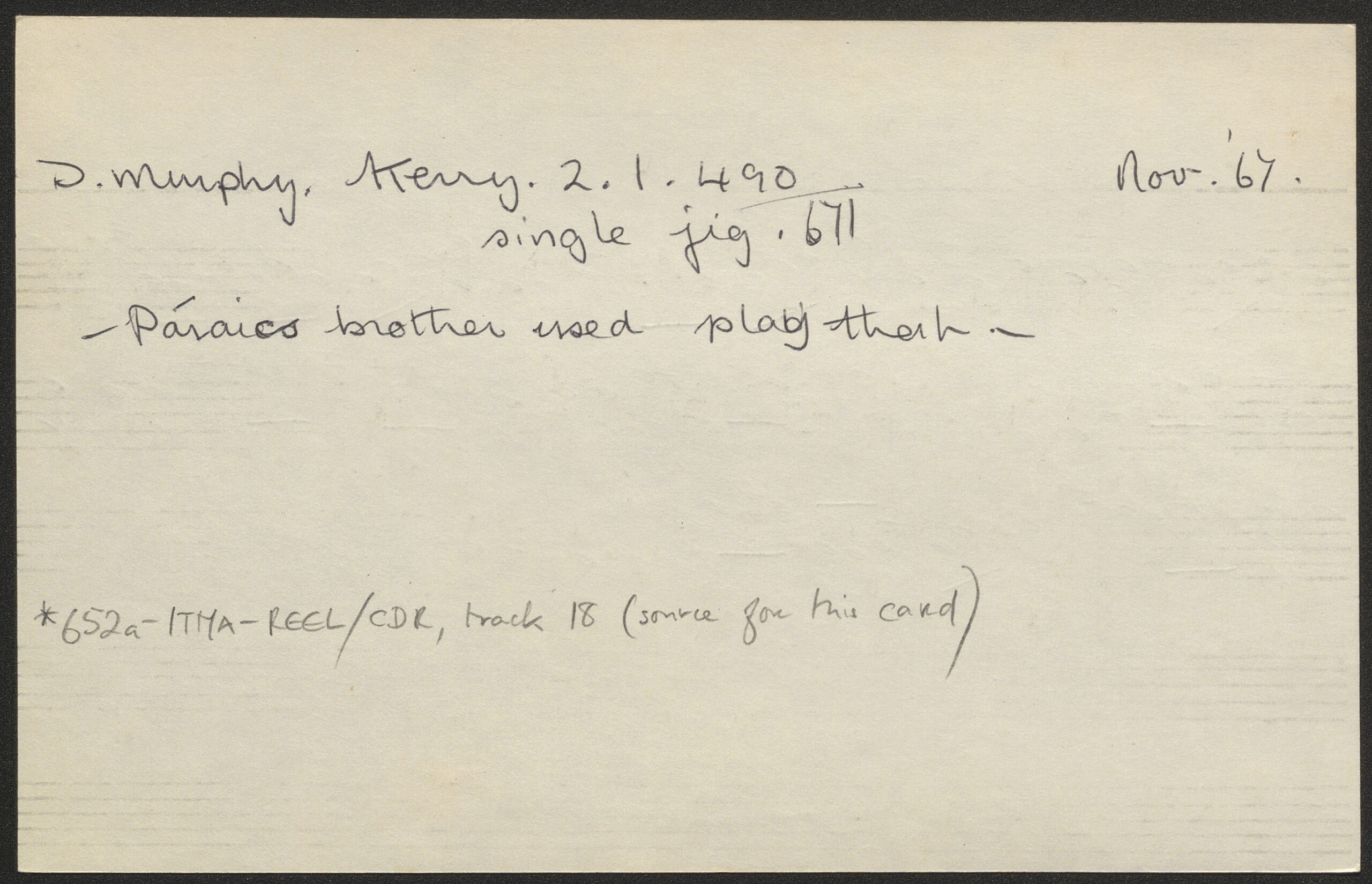
Some of the lyrics had apparently been lost or not known to Denis Murphy at the time of the collection: a recorded conversation with Breathnach from 1967 has the two agreeing that the title of Is it the priest you want? (CICD 2493) sounds like a line from a song; Murphy says the tune had been played by Pádraig O’Keeffe’s brother, likely referring to Bill O’Keeffe.
The naming of untitled tunes by the collectors and the publishers has become the subject of some controversy and preconceptions. The Breandán Breathnach materials allow one to look at the core of this creative process and reveal that not everything was as it seemed, at least when it came to the performers as “mad about music” as Denis Murphy.
The short exchanges between Breathnach and Murphy that remained on tape give the impression that both were enthusiastic about learning the names of the tunes. Moreover, the two seem to have developed a system for the task: after hearing an unfamiliar tune that hadn’t been introduced, Breathnach would call out “no name” and wait for Murphy to come up with a title, if he could think of any. If the tune sounded partly familiar, the two would discuss the similarities and differences between versions. Some of the tunes remained untitled and were later published in CRÉ exactly as collected.
Finding the CICD notes on titles or hearing some of the comments that got recorded can be fascinating as they reveal Denis Murphy’s own associations for the tunes that he played. As is often the case in the tradition, some of these names wouldn’t stick.
“We’ll call that Pete Sullivan’s fancy” was the title Murphy gave in October 1966 to the slide popularly known as She didn’t dance and dance, while Breathnach’s note added that the tune matched the motive of a song called The whistling thief (CICD 1080). A new interactive transcription of this tune based on the 1966 recording can be found below.
Pete Sullivan’s fancy, slide / Denis Murphy, fiddle ; transcribed by Anton Zille. (Breandán Breathnach Collection. Reel-to-Reel 30, October 1966)
“We’ll call it The Clamper jig – the one we played in Clamper” said Murphy in November 1967 about the slide that was later dubbed The Kaiser in honour of a local character, Pádraig O’Keeffe’s neighbour Thomas Murphy. Clamper, officially Clampar, is a sub-townland north of Kiskeam, Co. Cork where a local dancehall used to be located. It’s interesting that Billy Clifford has never heard the name The Clamper jig in reference to this tune while many outside of Sliabh Luachra wouldn’t know any of the above names, instead referring to it by the title Going to the well for water.
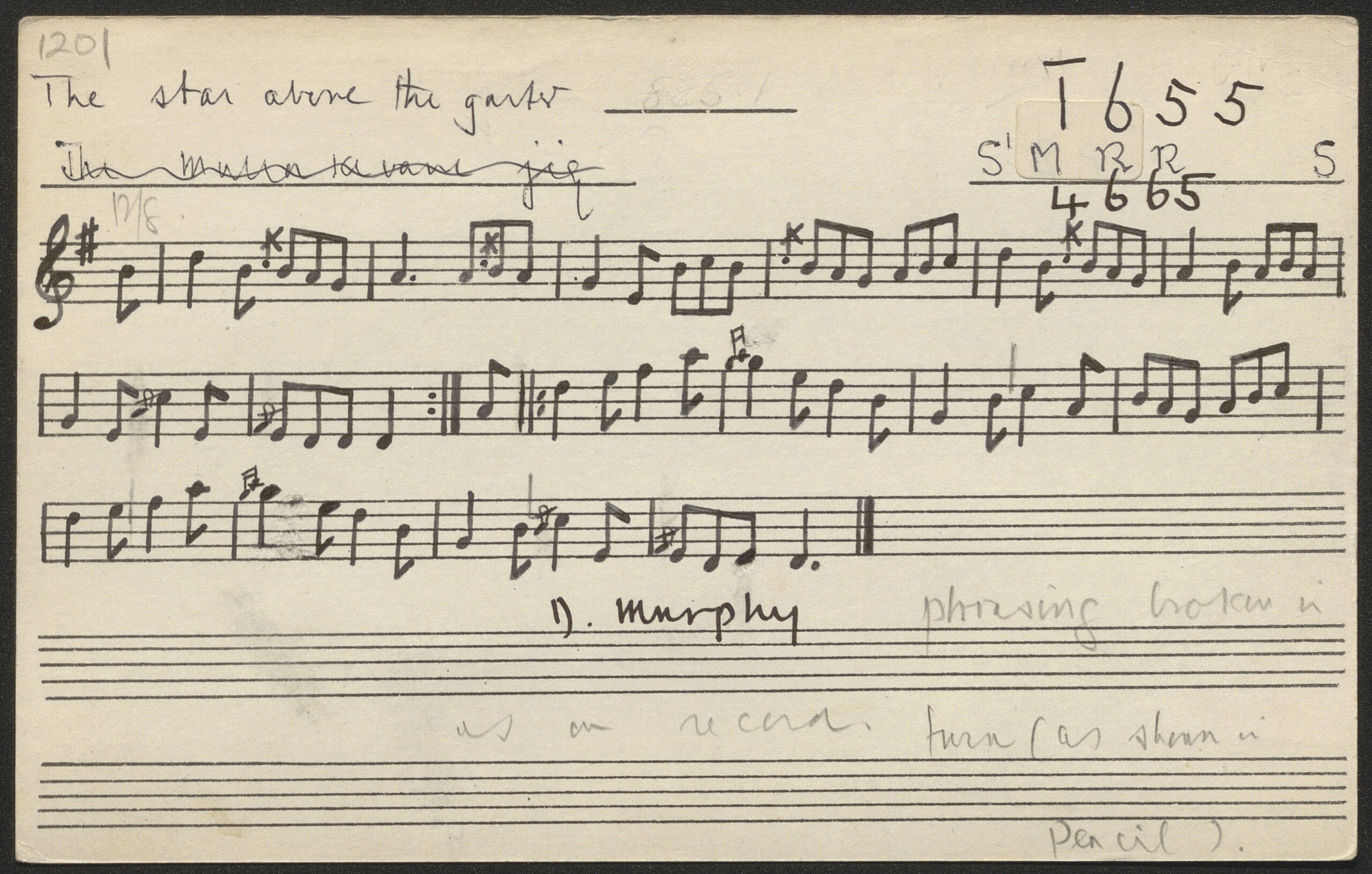
CICD notes and the timing of the Breandán Breathnach recordings can even be used to dispel myths about some popular tunes. The title of the slide The star above the garter has sparked theories of the tune name modified to spice up the eponymous record, the original tune title being The star and garter. If such an intent was there, it is now clear it predates the 1969 recording, possibly by decades – according to CICD 1201 and its source audio made in October 1966, Denis Murphy attributed the cheeky name variation to the famous blind Co. Cork fiddle master Tom Billy Murphy (1879–1944).